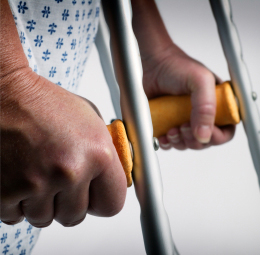Health injuries plotted for better policy
 A recent survey has looked at the widespread work-related injuries and illnesses in the health industry.
A recent survey has looked at the widespread work-related injuries and illnesses in the health industry.
A survey of nearly 5,000 members of the Australian Nursing and Midwifery Federation (Victorian Branch) found that 60 per cent of respondents had experienced an occupational health and safety (OHS) incident in the previous year.
Personal carers tended to have had more incidents than others.
Lead researcher Professor Helen De Cieri says there are interesting differences between the responses from registered nurses, enrolled nurses, midwives and personal carers.
“Personal carers and those working in mental health, emergency and maternity settings gave lower ratings for leading indicators, which are the positive steps that organisations and individuals take that may prevent an OHS incident from occurring,” Professor De Cieri said.
“Enrolled nurses tended to give their workplaces slightly higher scores.
“When we look at several measures in combination, the leading indicators are positively associated with a supervisor’s safety behaviour and the respondents’ own safety motivation and behaviour.”
She said there is value in prioritising health and safety.
“People who say they feel safe also have fewer OHS incidents. In other words: our findings indicate that if we all value health and safety and show a commitment to it, we can prevent injuries and illness,” Professor De Cieri said.
ANMF members were particularly concerned about the risks associated with workload, fatigue and shift work – especially double shifts.
“Respondents with greater risks in their workplace, including burnout, high physical demands and emotional labour [for example, faking a good mood if it is not the case], tend to have more OHS incidents and more near-misses,” Professor De Cieri said.
The survey found nearly 70 per cent of respondents had experienced occupational violence or aggression in the previous 12 months.
More than 40 per cent reported occasional episodes and 23 per cent reported regular episodes.
Patients or their relatives were the most common source – responsible for close to 30 per cent of incidences.
Respondents also reported abuse from supervisors, colleagues and subordinates.
The research team also piloted the Organizational Performance Metric (OPM) for use as a simple, preliminary measure of OHS leading indicators and to determine whether the metric could be used in the Australian nursing and midwifery workforce.
The OPM is an eight-item measure that assesses people’s views of how healthy and safe their workplaces are.
Professor De Cieri said the overall results raised awareness that could facilitate policy development.
“The findings also identify specific training needs and sub groups that are more at risk and may help organisations determine distribution of resources. Identification of demands or stressors that predispose workers to injury, coupled with the allocation of appropriate resources, will enable organisations to protect staff,” she said.
The Report is available from the Institute for Safety, Compensation and Recovery Research (ISCRR) website.







 Print
Print